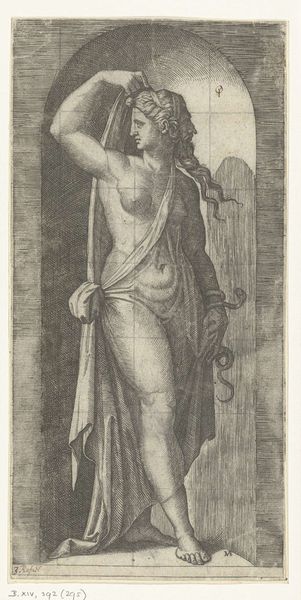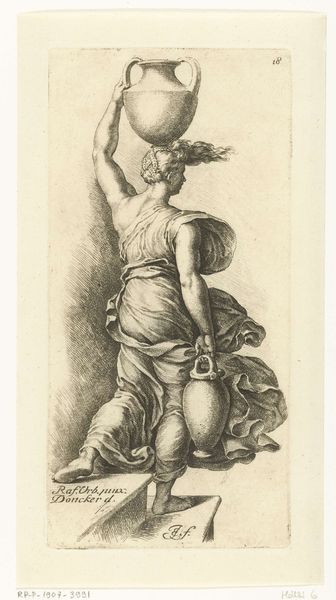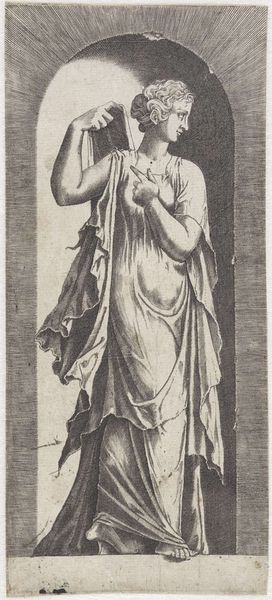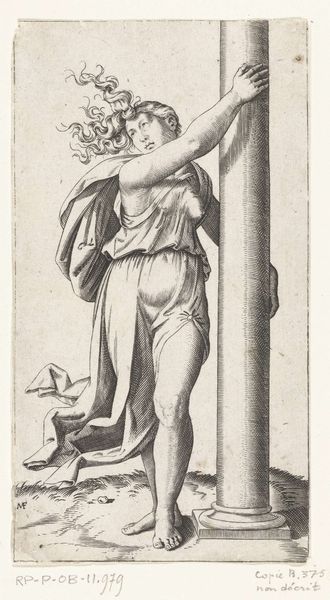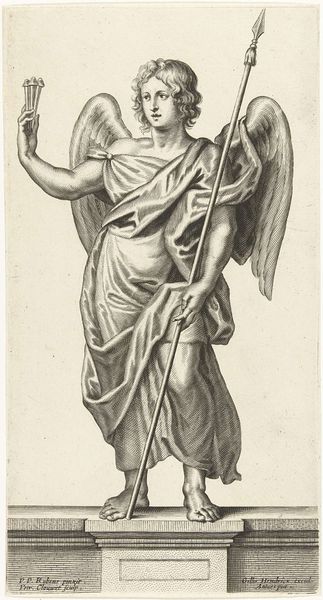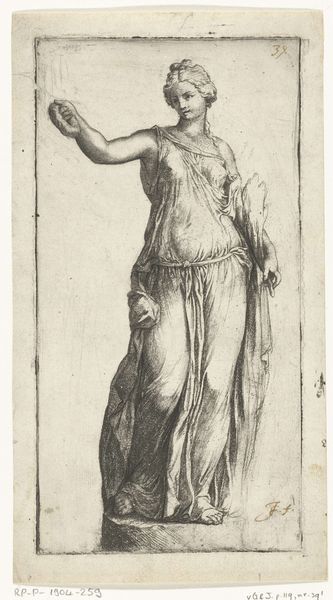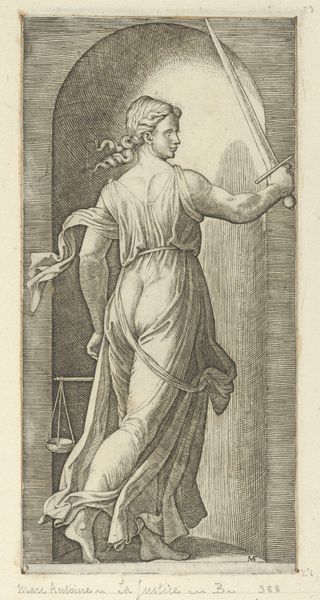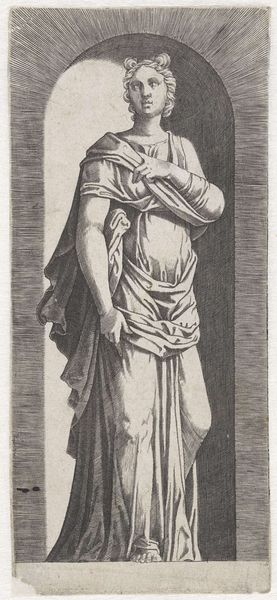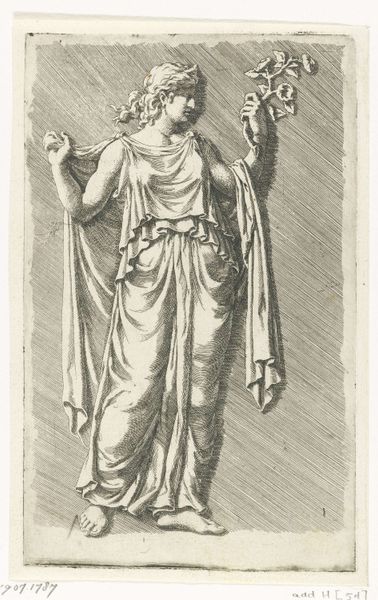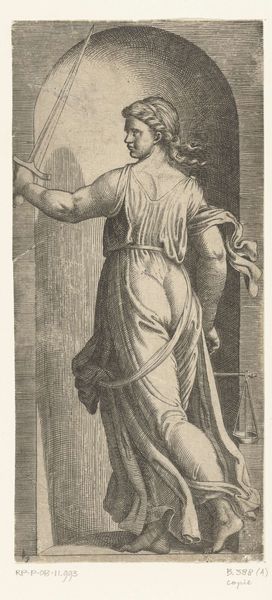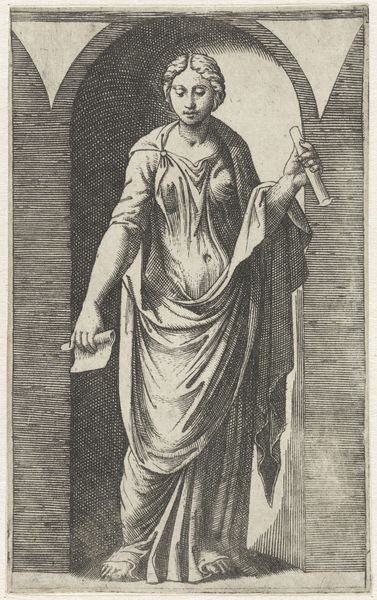
drawing, print, engraving
#
drawing
#
allegory
#
baroque
# print
#
classical-realism
#
figuration
#
form
#
line
#
engraving
Dimensions: height 226 mm, width 128 mm
Copyright: Rijks Museum: Open Domain
This print of Nike was made in the 17th century by Jan de Bisschop, using etching. It’s an intaglio process where the artist applies an acid-resistant ground to a metal plate, draws an image, and then bathes the plate in acid, which bites into the exposed lines. The resulting incised lines hold ink, transferring the image to paper. The quality of line in an etching can vary depending on the strength of the acid and the length of time the plate is exposed. Bisschop has used this to great effect here, creating a soft, velvety texture across the figure of Nike. Etching allows for a relatively quick reproduction of images, making art more accessible. Prints like these were popular among collectors, serving as both artworks in their own right and as a means of circulating and studying classical forms. By considering both the artistic skill and the reproductive potential of etching, we understand its full contribution to the art world.
Comments
No comments
Be the first to comment and join the conversation on the ultimate creative platform.
